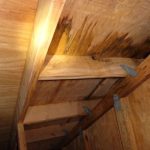A hydrostatic test is essential to ensure the optimized performance of gas cylinders, pipelines, boilers, and pressure vessels. It gives an insight into the strengths and flaws of the system. Usually, the testing takes place after a shutdown or a routine fixture. It aims to find out if the system will function smoothly under desired conditions.
Bear in mind; testing cannot happen when the system is running. You cannot monitor the equipment during normal operations.
How hydrostatic testing works?
The test involves filling the pipe or vessel with water. You can opt to dye the water for easy detection of leakage. The pressure is then added to the vessel until it reaches a specific pressure point. The next stage is to calculate the tightness of pressure by shutting off the valve and observing if the pressure leaves the system.
You can figure out the strength of the system by measuring the deformation of the container.
How often should I conduct hydrostatic testing?
Hydrostatic testing helps to enhance the durability of the system. You can prolong the life of the pipeline or vessel by sticking to security measures.
Reputable manufacturers in the market will always supply their plumbing products after hydrostatic testing. Once purchased and fixed, it is your responsibility to take care of its maintenance. This involves carrying out hydrostatic testing at regular intervals.
Remember, hydrostatic testing is the ultimate need for storage and movement of vessels. Containers can explode if the pressure in the system is not up to the mark or goes beyond it. Or, there may be a crack that expands quickly. Hydrostatic testing, therefore, serves as a non-destructive measure that should be a part of the fixing process.
How long does hydrostatic testing take?
One reason why most people delay this test is the time it takes. They assume that testing is going to waste their time. They proceed to the installation stage as they take it as a precautionary measure that they can overlook.
However, we mentioned earlier that Hydrostatic Pressure Testing is important to ensure the safety of the system. There are three different methods of hydrostatic testing. These methods differ in their requirements and duration.
Following is the description of these tests:
- Water Jacket Method
The water jacket test helps to evaluate small pressure vessels. It starts with filling the vessel with water and loading it inside a sealed chamber. The vessel is then put inside a test jacket with a certain pressure. It has to stay there for 30 seconds or more. Pressure causes the vessel to expand inside the test jacket. This forces the water out in the glass tube. Then, the total expansion is measured.
After recording the expansion of the vessel, the vessel depressurizes. It shrinks back to its original size, and water flows back into the test jacket.
Perhaps, the vessel will not return to its original shape. The new size is now known as permanent expansion. The difference between permanent expansion and overall expansion helps to indicate if the vessel is fit to use or not. A high percentage will make the vessel less suitable for use.
- Proof Pressure Method
The proof pressure test involves applying internal pressure to detect leaks or flaws in the vessel. It aims to spot every potential weakness, such as a thinning wall. Only a few states allow for the application of this method.
There is a set of circumstances that must be present before the test takes place. A controlled setting tends to give better results and a direct relationship between the variables. This test takes less than an hour to complete.
- Direct Expansion Method
This is the simplest of all three procedures. It involves filling the vessel with a certain volume of water. It pressurizes the system, and water expelled helps to analyze the pressure limits. Test pressure, amount of water inside and outside of the vessel are the variables used to determine total expansion and permanent expansion values.
This test takes hardly 30 minutes to reach the findings.
Testing Frequency and Precautions
Every country has legislation that governs test timings for the pipeline and vessels. It may be every two years for high-pressure gas containers and five to ten years for low-pressure vessels.
The main reason behind testing is to ensure there are fewer accidents. Even in itself, the test is a dangerous process. It requires personnel with expertise. They must adhere to technical standards and prescribed procedures. Also, getting knowledge about the possible outcomes of the setback will compel them to be extremely careful during the testing.
Final Word
Hydrostatic testing differs according to the supplies. For pipelines, the testing method is different than the gas cylinders. Yet the ground rule stays the same. That is, the system should not operate during the testing process. The procedure takes only a few minutes to complete.
Hence, one should never neglect it as there could be dire consequences. Do you have any queries about the testing? Feel free to ask our experts.







